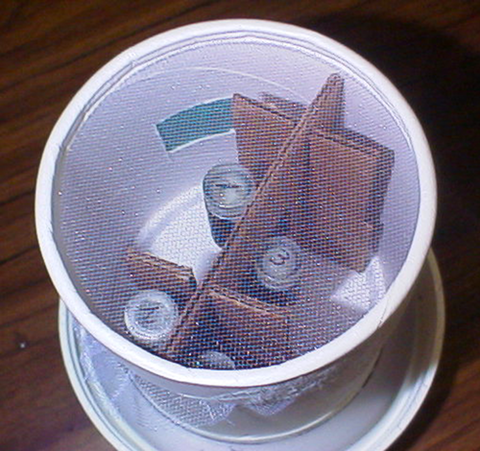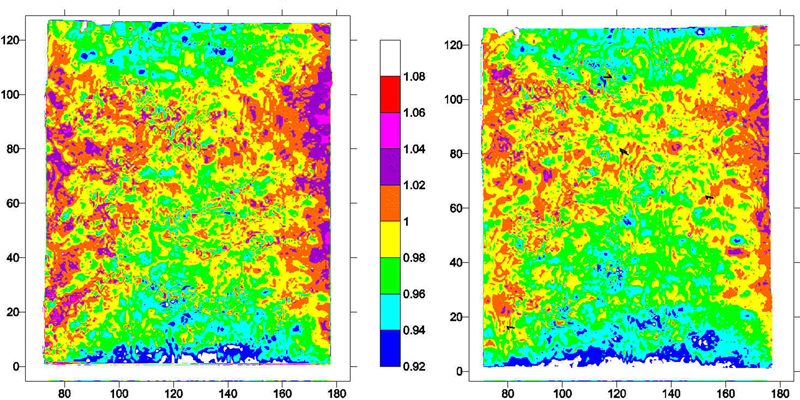
A paper cup served as an early irradiation enclosure. PML researchers placed dosimeters at various points in the enclosure and also monitored relative dose throughout the entire volume.
A recently announced malaria vaccine – found to be 100 % effective in a small human sample – was years in the making, and its creators had to overcome many difficulties. One of the first, a decade ago, was a critical mosquito problem. PML researchers helped them solve it, and then provided quality assurance and quality control assistance for the next seven years.
The vaccine, created by Maryland-based biotech firm Sanaria Inc. and clinically evaluated by the National Institutes of Health and other federal medical programs, is derived from mosquitoes that have been irradiated but not killed. The radiation critically weakens the malaria parasite, Plasmodium falciparum, which is extracted from the insects' salivary glands and administered intravenously to subjects.
From the outset, the work raised numerous key questions: How much radiation should the bugs get? What are the best dimensions for the irradiator, and which configurations will produce the most uniform exposures?
"Starting in 2005," says PML researcher James Puhl, "physicist Marc Desrosiers and I worked with Sanaria to find the right volume that would give a uniform radiation dose inside their Co-60 irradiator. They knew they needed to irradiate mosquitoes, but they needed our expertise to calibrate their irradiator and assure a min/max dose range.
"Marc and I accomplished that with a combination of radiochromic film sheets to measure relative dose gradients over the entire volume and alanine pellet dosimeters to measure absolute absorbed dose in strategic spots."
Thereafter, the PML team from the Radiation Physics Division continued to provide alanine dosimeters for each batch of mosquitoes that Sanaria processed from 2008 to 2012.
When the results were announced last month, they attracted widespread press attention. In addition, the news served as yet another example of how behind-the-scenes research and services from NIST underlie many scientific and technological advances.


